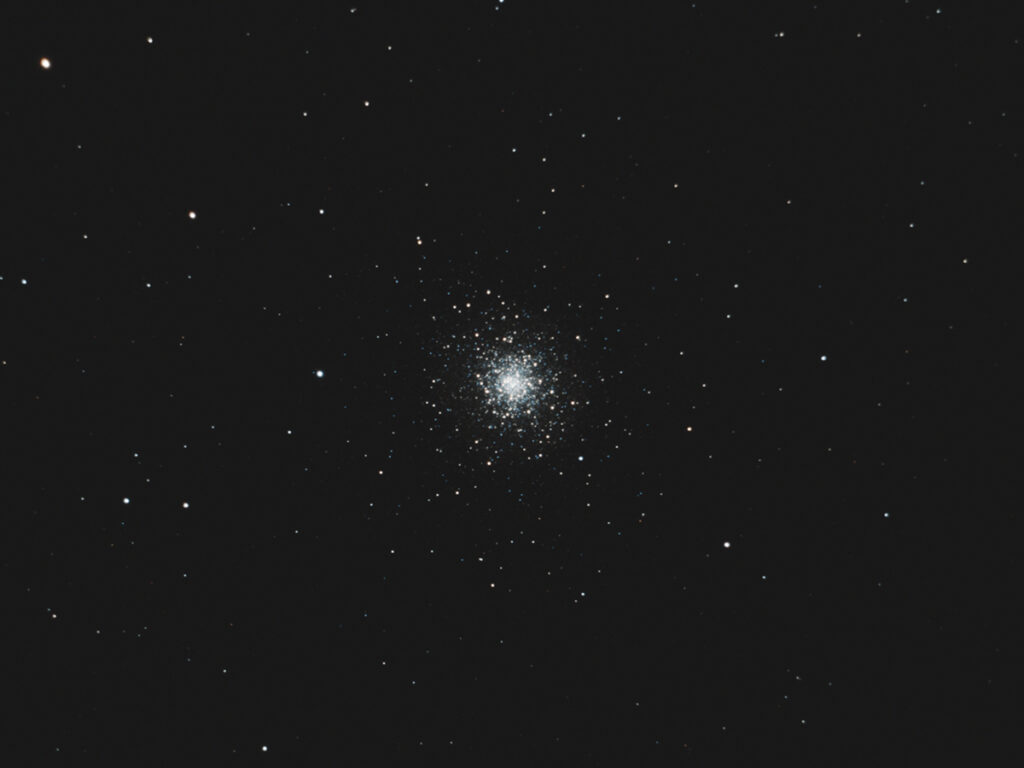
Telescope: Celestron C9.25 @ f/10, Orion Atlas EQ-G
Camera: QHY 168c, -10C
Filter: Orion Imaging Skyglow Filter
Guide scope: Astro-Tech 60mm, ASI290MM Mini, PHD2
Exposure: 126x30sec saved as TIFFs
Darks: 32x30sec saved as TIFFs
Flats: 32×0.050sec, tee shirt flats taken at dusk
Average Light Pollution: Red zone, poor transparency, bright moonlight, clouds
Lensed Sky Quality Meter: 17.0 mag/arc-sec^2
Stacking: Mean with a 2-sigma clip.
White Balance: Nebulosity Automatic
Software: SharpCap Pro, Deep Sky Stacker, Nebulosity, Photoshop
M92 is the ‘other’ globular cluster in Hercules. M92 lies to the northeast of the popular M13 globular cluster in a relatively lonely patch of sky making it a bit harder to locate, but well worth the effort. Interestingly, M92 is listed as being fainter than M13 (Mv 6.4 for M92 vs. 5.8 for M13), but I find the core of M92 to be a tad brighter than M13. This is likely the result the apparent size of M13 being larger than M92 giving M13 a higher total integrated brightness.
This is one of 5 images that I took under fairly poor conditions to evaluate my C9.25 for deepsky imaging in its native f/10 focal length. Although not as good as a modern Edge or ACF Schmidt Cassegrain, it does fairly well with an APS-c sensor. I’m seriously thinking about using the C9.25 for high resolution deepsky imaging.
M92 is currently well placed, high in the northeast after sunset.
Recent Comments